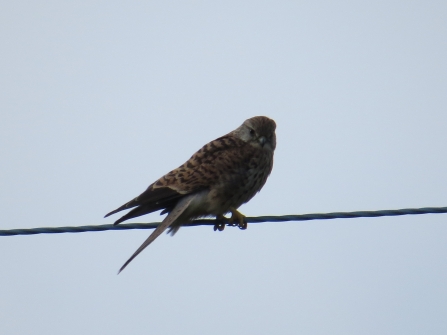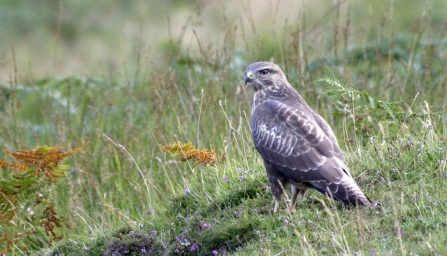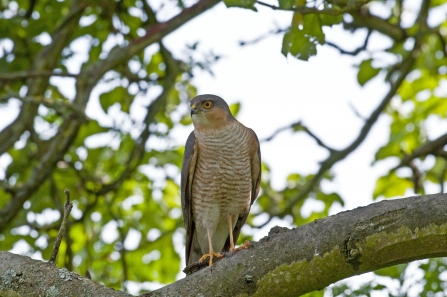Our roadside raptors can be so large and fierce looking that you may have thought you were in the presence of an eagle, or an escapee from a zoo. While it’s true that escapes can happen, it’s much more likely that the bird you saw is one of these carrion-loving carnivores. They hang around busy roads and motorways looking for an easy meal – you’re especially likely to see them if the road cuts through woodland or farmland.
Roadside raptors
© Andrew Whitmarsh
Red kites
Persecuted to near extinction in the UK, red kite populations are soaring once again thanks to reintroduction programmes and legal protection. These large, majestic birds of prey have angled, red wings that are tipped with black and have white patches underneath. Their reddish-brown, deeply forked tail is the real giveaway, easy to spot even from great distances.
Red kites were common in Shakespearean London, where they fed on scraps in the streets and collected rags or stole hung-out washing for nest-building materials. Shakespeare even referred to this habit in 'The Winter's Tale' when he wrote: 'When the kite builds, look to lesser linen'. The nest of a red kite is an untidy affair, often built on top of an old crow's nest. It is lined with sheep's wool and decorated with all kinds of objects like paper, plastic, and cloth.

Kestrel
The Kestrel is famous as the ‘motorway hawk’, often seen hovering over roadside verges, looking out for its favourite food: small mammals like field voles. They prefer open habitats like grassland, farmland and heathland, but can be seen in towns and villages. Males have a grey head and tail with a prominent black band, a gingery-brown back and a creamy underside which is speckled with black. Females are similar, but with a more uniform brown back and dark bands on the tail.
Despite the classic hovering hunting method being so well-known, Kestrels prefer to employ the sit and wait approach to hunting, spending long periods sitting still on a post, tree or rock, watching until they spot some prey, at which point the bird will slip off to pounce.

© Darin Smith
Buzzards
Like red kites, buzzards have suffered a great deal from persecution and pesticide poisoning. Over the last few decades, however, they have made a stunning comeback, and are now found in almost every part of the UK. They are smaller than red kites, with broader wings and much shorter tails. Their plumage can vary from a uniform, dark brown, to much paler shades.
In the spring, male buzzards perform a 'roller coaster' display, soaring up high and then swooping down repeatedly to attract a mate. Once paired, buzzards construct their bulky nest in the fork of a large tree, often near to a wood. The female will lay between two and four eggs, which take just over a month to hatch.

Sparrowhawk © Russ Valentine
Sparrowhawk
The sparrowhawk is one of our smallest birds of prey, they have rounded wings and a relatively long, narrow tail. Males are small with a blue-grey back and white underparts showing reddish-orange barring. Females are much larger, with browner plumage above and grey bars below. They both have reddish cheeks.
Female sparrowhawks can be up to 25% larger than the males - the biggest size difference in any bird. Its thought that smaller males are more agile when hunting their small-bird prey.
They are excellent bird hunters, catching small species like finches, sparrows and tits; sometimes they ambush their prey from a perch, while other times they may fly low, suddenly changing direction to fool it.

